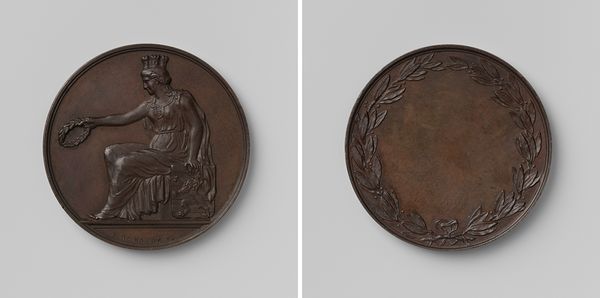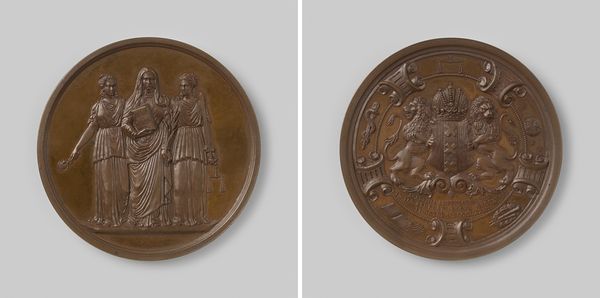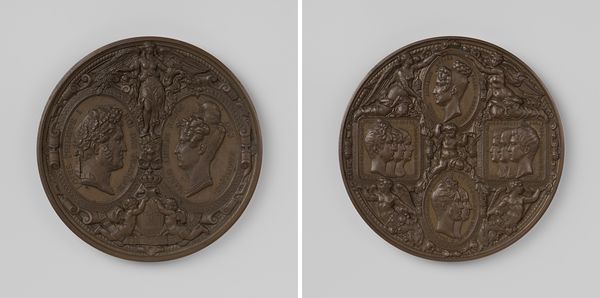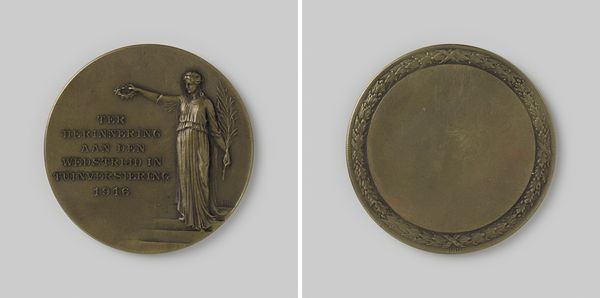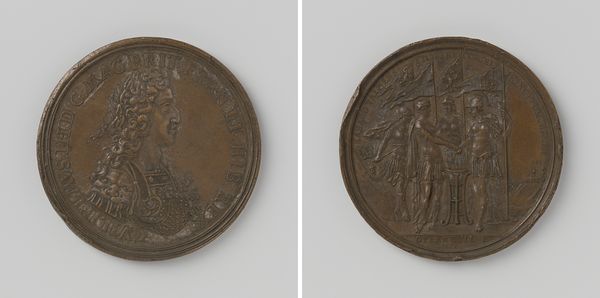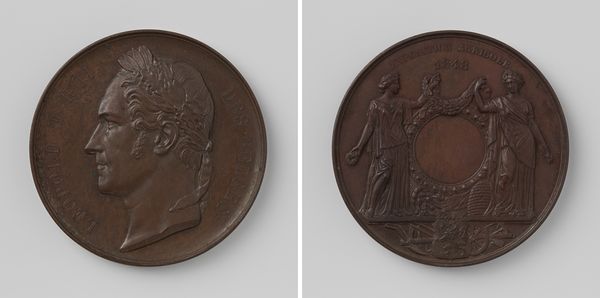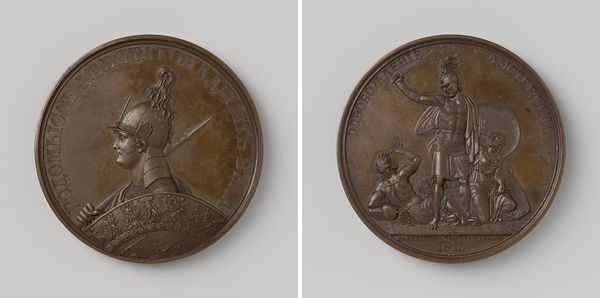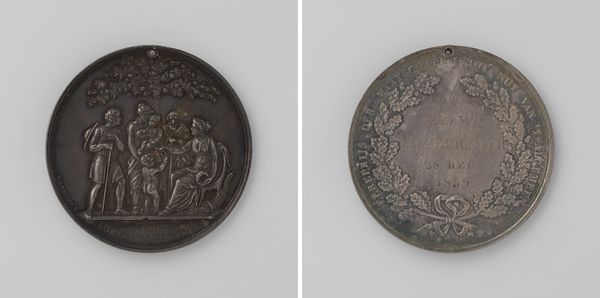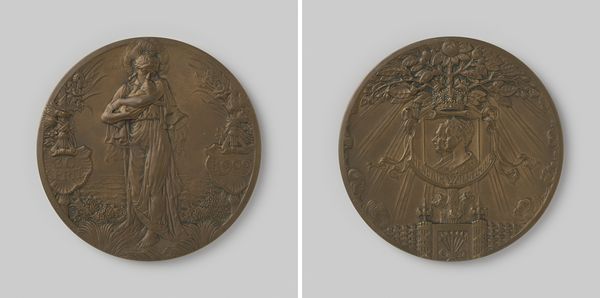
Provinciaal Genootschap van Kunsten en Wetenschappen in Noord-Brabant 1839
0:00
0:00
metal, relief, bronze, sculpture
#
medal
#
neoclassicism
#
metal
#
sculpture
#
relief
#
bronze
#
sculpture
#
ceramic
#
history-painting
Dimensions: diameter 5.7 cm, weight 74.20 gr
Copyright: Rijks Museum: Open Domain
Editor: This is a bronze medal, “Provinciaal Genootschap van Kunsten en Wetenschappen in Noord-Brabant,” created in 1839 by David van der Kellen. I’m struck by the crispness of the relief and how symbolic the imagery is. How might we unpack the significance of its materiality and its historical context? Curator: It's important to see this medal not just as an object, but as a product of a specific production process embedded within the economic and social structure of 19th-century Netherlands. Bronze was a deliberate choice. Were alternatives available, such as cheaper metals or even glass? What statement was the commissioner trying to make using this medium? Editor: That's interesting. I hadn’t thought about bronze being a deliberate choice, as opposed to simply traditional. I suppose its relative durability and associated cost signals something about the importance of the awarding organization, as well as the perceived permanence of knowledge and art? Curator: Exactly! Consider too, the labor involved. The skills of the die cutter, the foundry workers – they are all part of the meaning. The neoclassical style speaks to the intellectual aspirations of the era, invoking classical ideals of knowledge and civic virtue, yet created by 19th-century hands under specific working conditions. And this was replicated: understanding who had access to it also unlocks this medal's social context and implications. Editor: So, the medal’s meaning isn’t just about the imagery, but also the industrial and economic systems that made it possible. That's such a helpful reminder to consider the full picture. Thanks! Curator: Absolutely. It moves us beyond mere appreciation of design towards a broader understanding of the society it served and from whence its material substance was drawn.
Comments
No comments
Be the first to comment and join the conversation on the ultimate creative platform.

